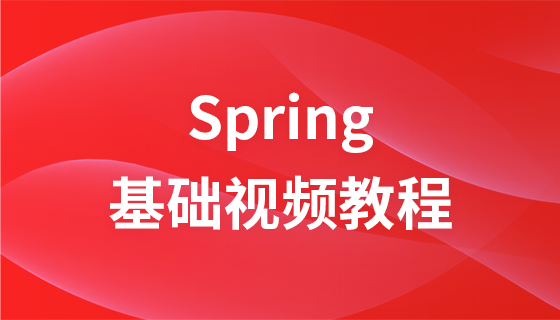
この記事では、Spring Boot キャッシュのソース コードについて説明します。必要な方は参考にしていただければ幸いです。
アプリケーション キャッシュをプロジェクトに追加したいと考えています。最初は ehcache と springboot を統合する方法を考えていました。最終的に行う必要があるのは 3 つだけです。 :
pom 依存関係
ehcache 構成ファイルを作成します
アノテーション @EnableCaching をブート アプリケーションに追加します。これは魔法です。
<dependency>
<groupid>net.sf.ehcache</groupid>
<artifactid>ehcache</artifactid>
<version>2.10.5</version>
</dependency>
<?xml version="1.0" encoding="UTF-8"?>
<ehcache>
<!-- 设定缓存的默认数据过期策略 -->
<defaultcache></defaultcache>
</ehcache>
@SpringBootApplication
@EnableCaching
public class EhCacheApplication {
public static void main(String[] args) {
SpringApplication.run(EhCacheApplication.class, args);
}
}
@CachePut(value = "fish-ehcache", key = "#person.id")
public Person save(Person person) {
System.out.println("为id、key为:" + person.getId() + "数据做了缓存");
return person;
}
@CacheEvict(value = "fish-ehcache")
public void remove(Long id) {
System.out.println("删除了id、key为" + id + "的数据缓存");
}
@Cacheable(value = "fish-ehcache", key = "#person.id")
public Person findOne(Person person) {
findCount.incrementAndGet();
System.out.println("为id、key为:" + person.getId() + "数据做了缓存");
return person;
}すごく便利ですよね?次に、もう少し深く掘り下げて、春がどのように起こるかを見てみましょう。これは主に 2 つの部分に分かれており、1 つは起動時に実行される内容、2 つ目は実行時に実行される内容、3 つ目はサードパーティのキャッシュ コンポーネントへの適応です。
実行時に実行される内容です。 starting,これは @EnableCaching タグで始まります。キャッシュ機能を使用する場合、このタグは
@Target({ElementType.TYPE})
@Retention(RetentionPolicy.RUNTIME)
@Documented
@Import({CachingConfigurationSelector.class})
public @interface EnableCaching {
boolean proxyTargetClass() default false;
AdviceMode mode() default AdviceMode.PROXY;
int order() default 2147483647;
}/**
由CacheOperationSourcePointcut作为注解切面,会解析
SpringCacheAnnotationParser.java
扫描方法签名,解析被缓存注解修饰的方法,将生成一个CacheOperation的子类并将其保存到一个数组中去
**/
protected Collection<cacheoperation> parseCacheAnnotations(SpringCacheAnnotationParser.DefaultCacheConfig cachingConfig, AnnotatedElement ae) {
Collection<cacheoperation> ops = null;
//找@cacheable注解方法
Collection<cacheable> cacheables = AnnotatedElementUtils.getAllMergedAnnotations(ae, Cacheable.class);
if (!cacheables.isEmpty()) {
ops = this.lazyInit(ops);
Iterator var5 = cacheables.iterator();
while(var5.hasNext()) {
Cacheable cacheable = (Cacheable)var5.next();
ops.add(this.parseCacheableAnnotation(ae, cachingConfig, cacheable));
}
}
//找@cacheEvict注解的方法
Collection<cacheevict> evicts = AnnotatedElementUtils.getAllMergedAnnotations(ae, CacheEvict.class);
if (!evicts.isEmpty()) {
ops = this.lazyInit(ops);
Iterator var12 = evicts.iterator();
while(var12.hasNext()) {
CacheEvict evict = (CacheEvict)var12.next();
ops.add(this.parseEvictAnnotation(ae, cachingConfig, evict));
}
}
//找@cachePut注解的方法
Collection<cacheput> puts = AnnotatedElementUtils.getAllMergedAnnotations(ae, CachePut.class);
if (!puts.isEmpty()) {
ops = this.lazyInit(ops);
Iterator var14 = puts.iterator();
while(var14.hasNext()) {
CachePut put = (CachePut)var14.next();
ops.add(this.parsePutAnnotation(ae, cachingConfig, put));
}
}
Collection<caching> cachings = AnnotatedElementUtils.getAllMergedAnnotations(ae, Caching.class);
if (!cachings.isEmpty()) {
ops = this.lazyInit(ops);
Iterator var16 = cachings.iterator();
while(var16.hasNext()) {
Caching caching = (Caching)var16.next();
Collection<cacheoperation> cachingOps = this.parseCachingAnnotation(ae, cachingConfig, caching);
if (cachingOps != null) {
ops.addAll(cachingOps);
}
}
}
return ops;
}</cacheoperation></caching></cacheput></cacheevict></cacheable></cacheoperation></cacheoperation>メソッド実行時の動作
実行時には主にCacheInterceptorクラスが使用されます。
public class CacheInterceptor extends CacheAspectSupport implements MethodInterceptor, Serializable {
public CacheInterceptor() {
}
public Object invoke(final MethodInvocation invocation) throws Throwable {
Method method = invocation.getMethod();
CacheOperationInvoker aopAllianceInvoker = new CacheOperationInvoker() {
public Object invoke() {
try {
return invocation.proceed();
} catch (Throwable var2) {
throw new ThrowableWrapper(var2);
}
}
};
try {
return this.execute(aopAllianceInvoker, invocation.getThis(), method, invocation.getArguments());
} catch (ThrowableWrapper var5) {
throw var5.getOriginal();
}
}
}/**
CacheAspectSupport.java
执行@CachaEvict @CachePut @Cacheable的主要逻辑代码
**/
private Object execute(final CacheOperationInvoker invoker, Method method, CacheAspectSupport.CacheOperationContexts contexts) {
if (contexts.isSynchronized()) {
CacheAspectSupport.CacheOperationContext context = (CacheAspectSupport.CacheOperationContext)contexts.get(CacheableOperation.class).iterator().next();
if (this.isConditionPassing(context, CacheOperationExpressionEvaluator.NO_RESULT)) {
Object key = this.generateKey(context, CacheOperationExpressionEvaluator.NO_RESULT);
Cache cache = (Cache)context.getCaches().iterator().next();
try {
return this.wrapCacheValue(method, cache.get(key, new Callable<object>() {
public Object call() throws Exception {
return CacheAspectSupport.this.unwrapReturnValue(CacheAspectSupport.this.invokeOperation(invoker));
}
}));
} catch (ValueRetrievalException var10) {
throw (ThrowableWrapper)var10.getCause();
}
} else {
return this.invokeOperation(invoker);
}
} else {
/**
执行@CacheEvict的逻辑,这里是当beforeInvocation为true时清缓存
**/
this.processCacheEvicts(contexts.get(CacheEvictOperation.class), true, CacheOperationExpressionEvaluator.NO_RESULT);
//获取命中的缓存对象
ValueWrapper cacheHit = this.findCachedItem(contexts.get(CacheableOperation.class));
List<cacheaspectsupport.cacheputrequest> cachePutRequests = new LinkedList();
if (cacheHit == null) {
//如果没有命中,则生成一个put的请求
this.collectPutRequests(contexts.get(CacheableOperation.class), CacheOperationExpressionEvaluator.NO_RESULT, cachePutRequests);
}
Object cacheValue;
Object returnValue;
/**
如果没有获得缓存对象,则调用业务方法获得返回对象,hasCachePut会检查exclude的情况
**/
if (cacheHit != null && cachePutRequests.isEmpty() && !this.hasCachePut(contexts)) {
cacheValue = cacheHit.get();
returnValue = this.wrapCacheValue(method, cacheValue);
} else {
returnValue = this.invokeOperation(invoker);
cacheValue = this.unwrapReturnValue(returnValue);
}
this.collectPutRequests(contexts.get(CachePutOperation.class), cacheValue, cachePutRequests);
Iterator var8 = cachePutRequests.iterator();
while(var8.hasNext()) {
CacheAspectSupport.CachePutRequest cachePutRequest = (CacheAspectSupport.CachePutRequest)var8.next();
/**
执行cachePut请求,将返回对象放到缓存中
**/
cachePutRequest.apply(cacheValue);
}
/**
执行@CacheEvict的逻辑,这里是当beforeInvocation为false时清缓存
**/
this.processCacheEvicts(contexts.get(CacheEvictOperation.class), false, cacheValue);
return returnValue;
}
}</cacheaspectsupport.cacheputrequest></object>サードパーティ キャッシュ コンポーネントへの適応
上記の分析を通じて、Spring キャッシュ機能の詳細がわかりました。以下に分析する必要があるのはその理由です。必要なのは Maven ステートメントだけです。いくつかの依存関係があるだけで、Spring Boot は自動的に適応できます。
上記の実行メソッドでは、キャッシュが適用されます。 CachePutRequest は CacheAspectSupport 内部クラスです。private class CachePutRequest {
private final CacheAspectSupport.CacheOperationContext context;
private final Object key;
public CachePutRequest(CacheAspectSupport.CacheOperationContext context, Object key) {
this.context = context;
this.key = key;
}
public void apply(Object result) {
if (this.context.canPutToCache(result)) {
//从context中获取cache实例,然后执行放入缓存的操作
Iterator var2 = this.context.getCaches().iterator();
while(var2.hasNext()) {
Cache cache = (Cache)var2.next();
CacheAspectSupport.this.doPut(cache, this.key, result);
}
}
}
}protected Collection extends Cache> getCaches(CacheOperationInvocationContext<cacheoperation> context, CacheResolver cacheResolver) {
Collection extends Cache> caches = cacheResolver.resolveCaches(context);
if (caches.isEmpty()) {
throw new IllegalStateException("No cache could be resolved for '" + context.getOperation() + "' using resolver '" + cacheResolver + "'. At least one cache should be provided per cache operation.");
} else {
return caches;
}
}</cacheoperation>#少し話が逸れたようですが、話を戻します... spring-boot-autoconfigure パッケージには、次のものがすべてあります。自動アセンブリ関連のクラス。ここには、次のような EhcacheCacheConfiguration クラスがあります。
@Configuration
@ConditionalOnClass({Cache.class, EhCacheCacheManager.class})
@ConditionalOnMissingBean({CacheManager.class})
@Conditional({CacheCondition.class, EhCacheCacheConfiguration.ConfigAvailableCondition.class})
class EhCacheCacheConfiguration {
......
static class ConfigAvailableCondition extends ResourceCondition {
ConfigAvailableCondition() {
super("EhCache", "spring.cache.ehcache", "config", new String[]{"classpath:/ehcache.xml"});
}
}
}これにより、クラス パスに ehcache.xml ファイルがあるかどうかが直接判断されます
以上がSpring Boot キャッシュのソース コードを理解するの詳細内容です。詳細については、PHP 中国語 Web サイトの他の関連記事を参照してください。
